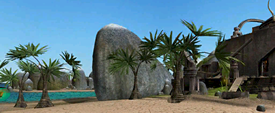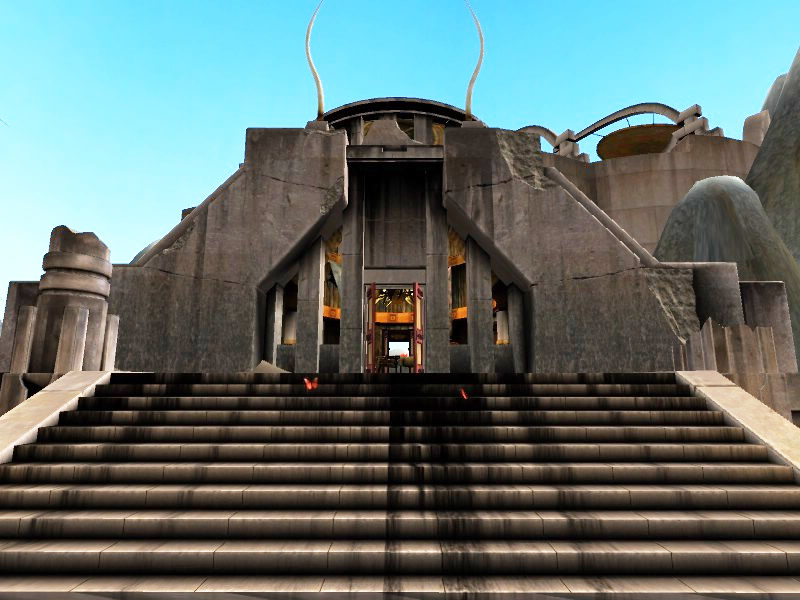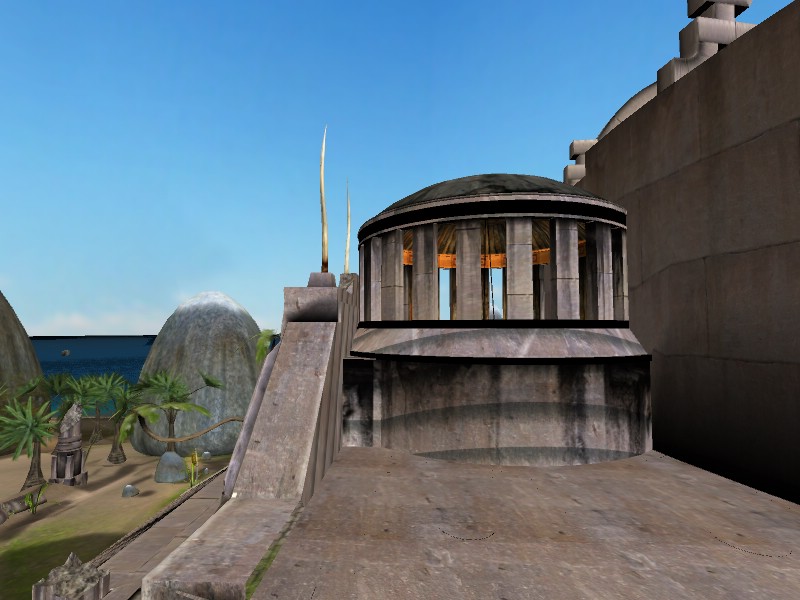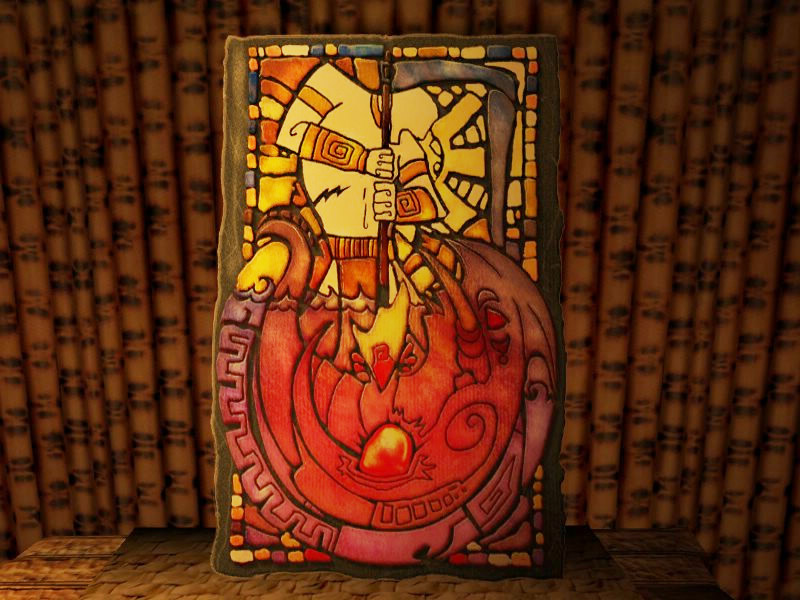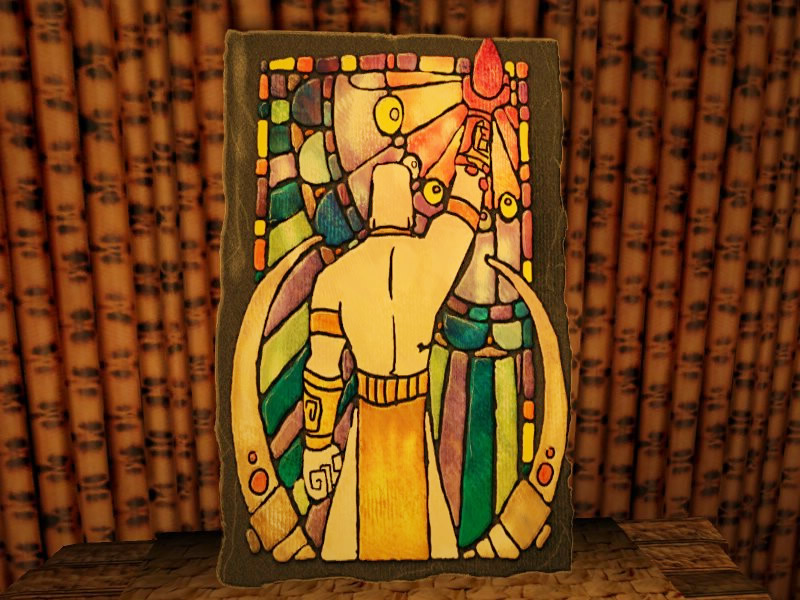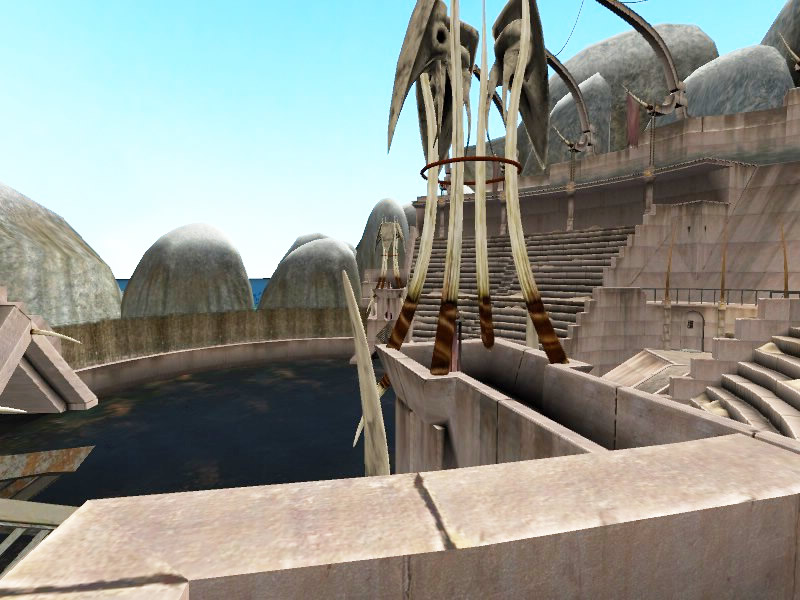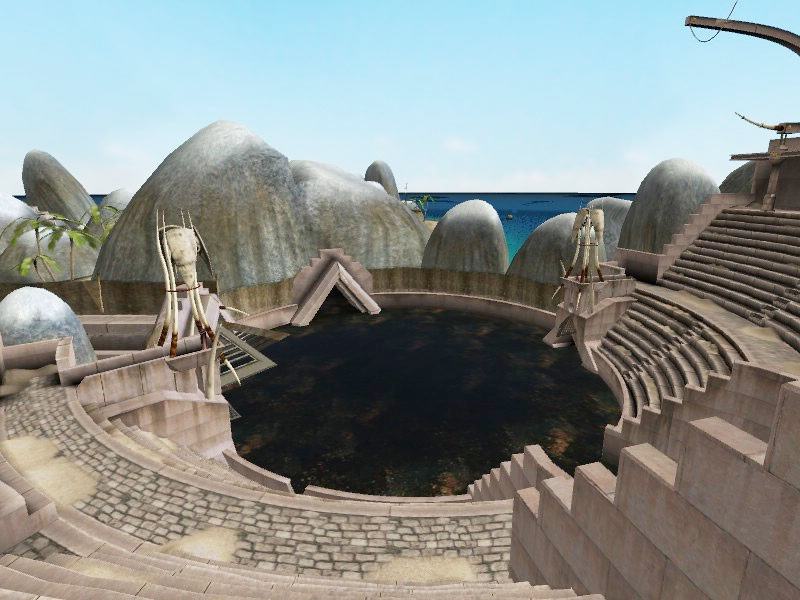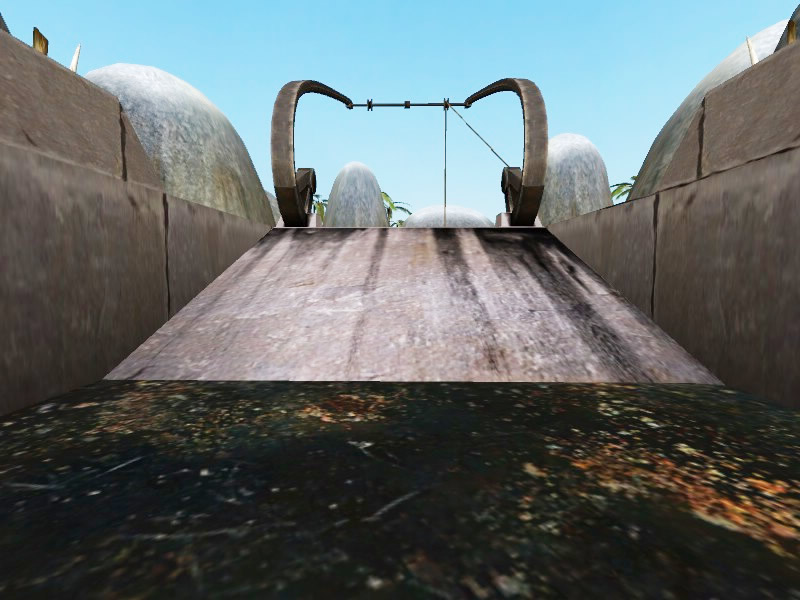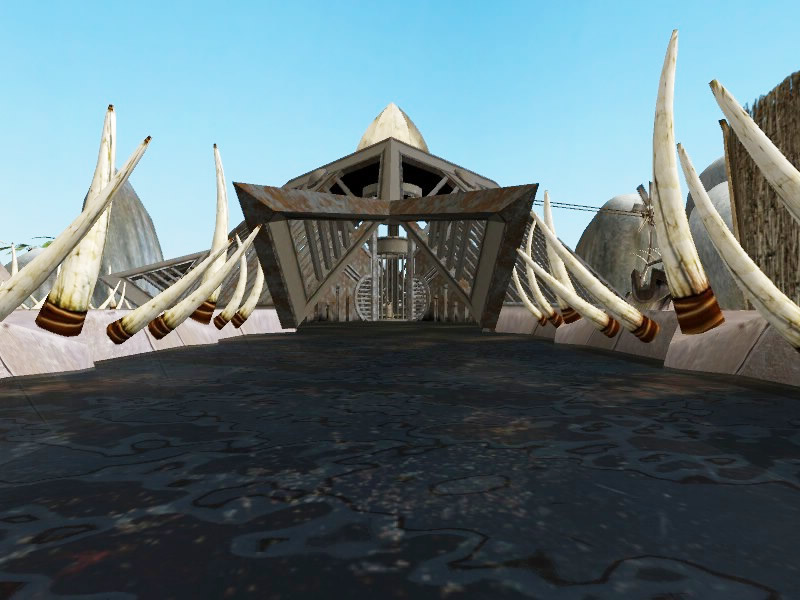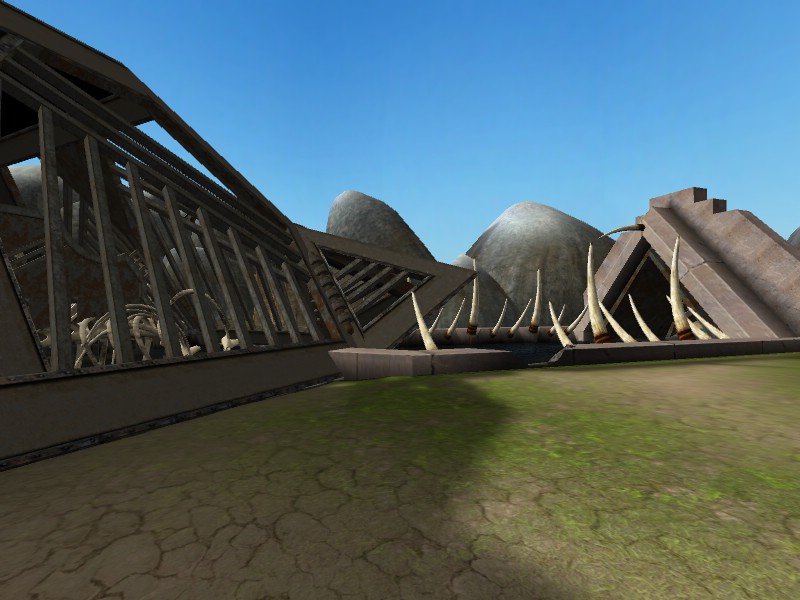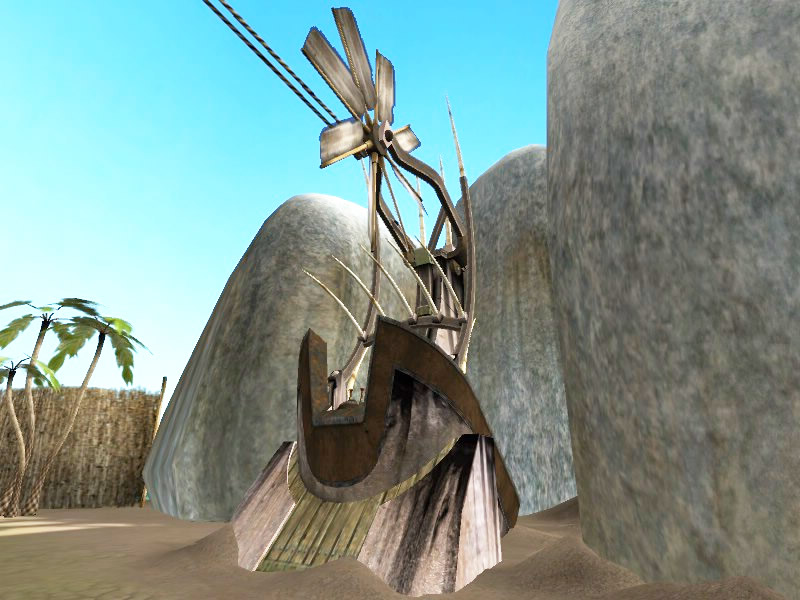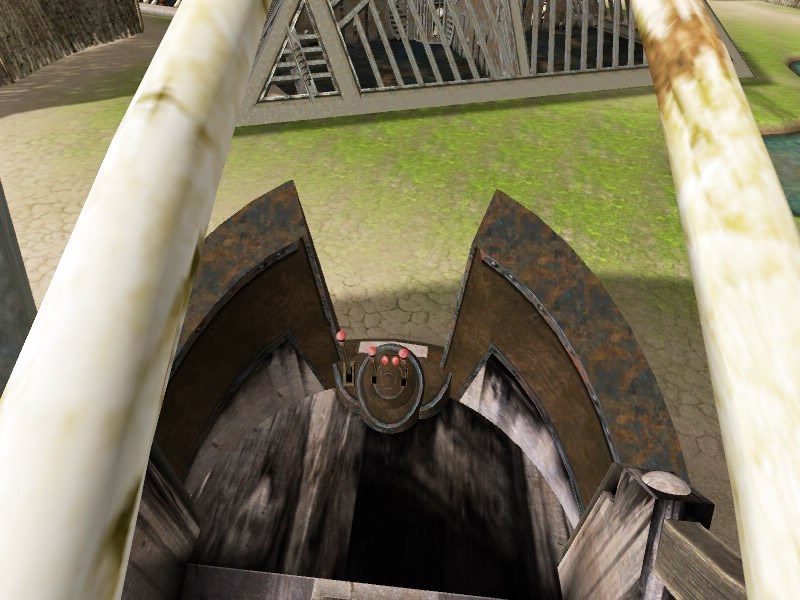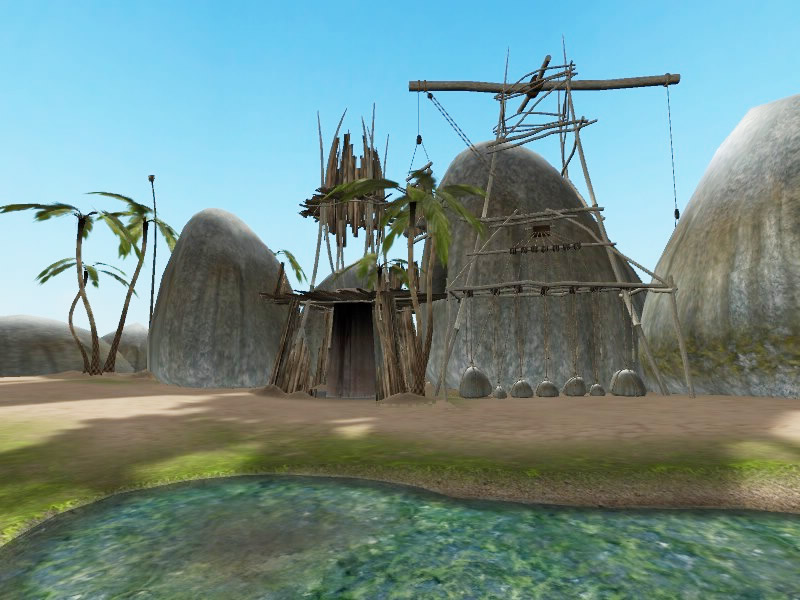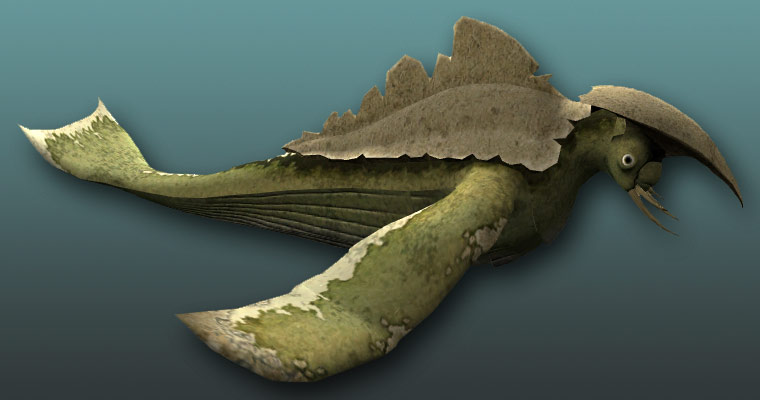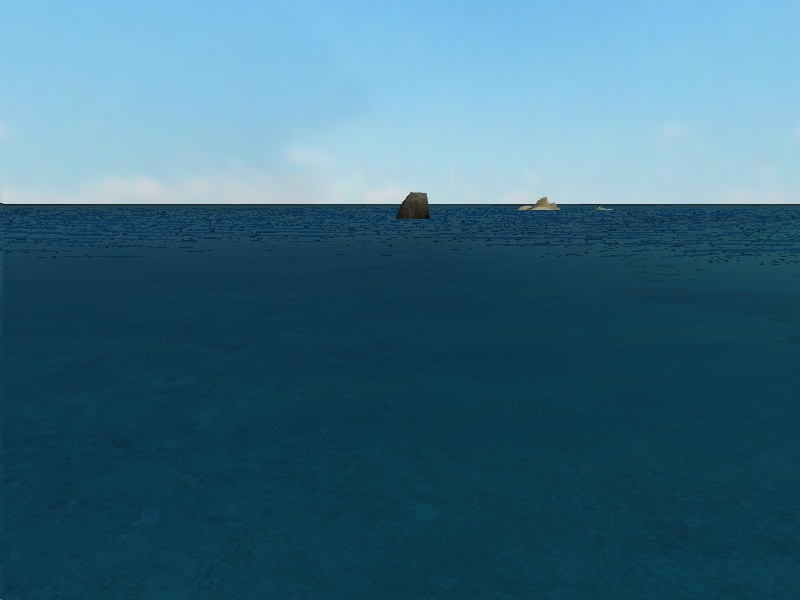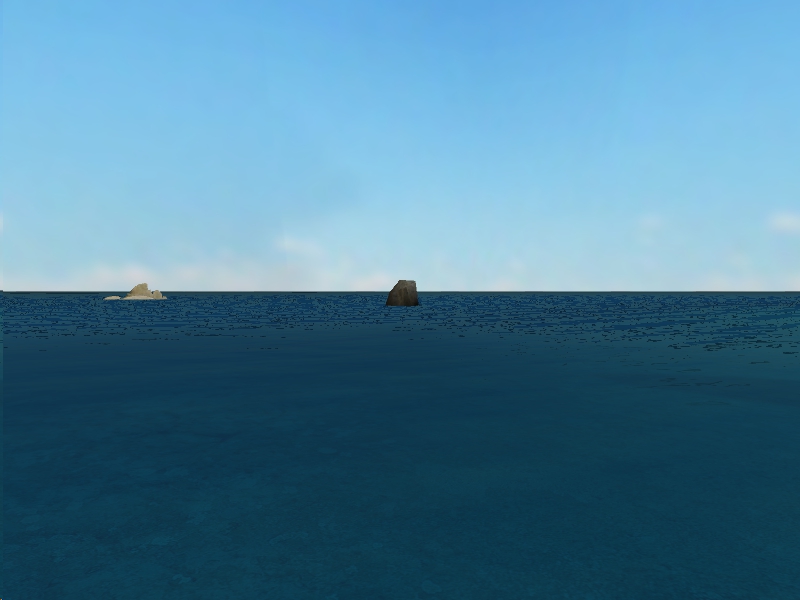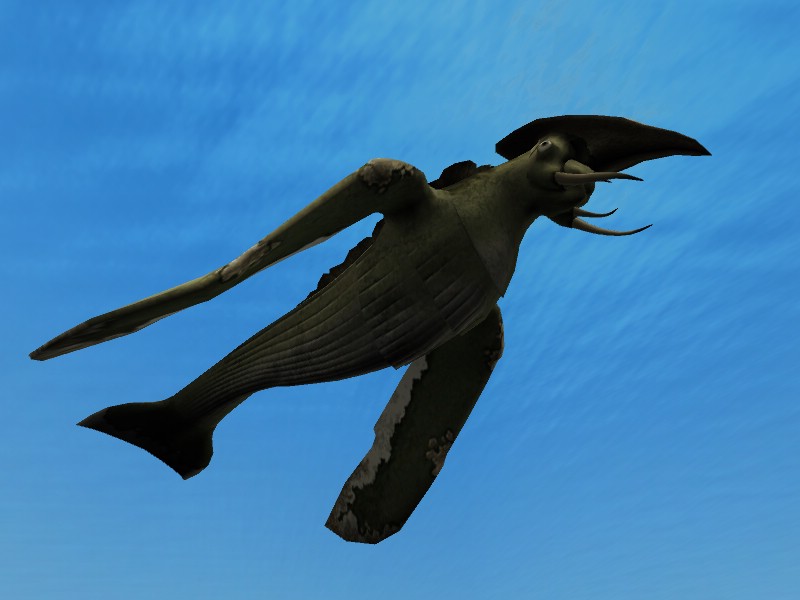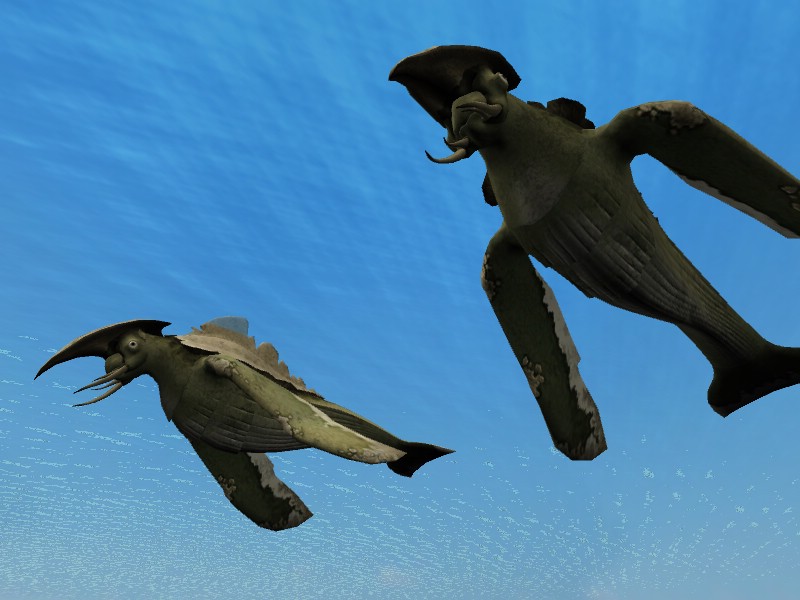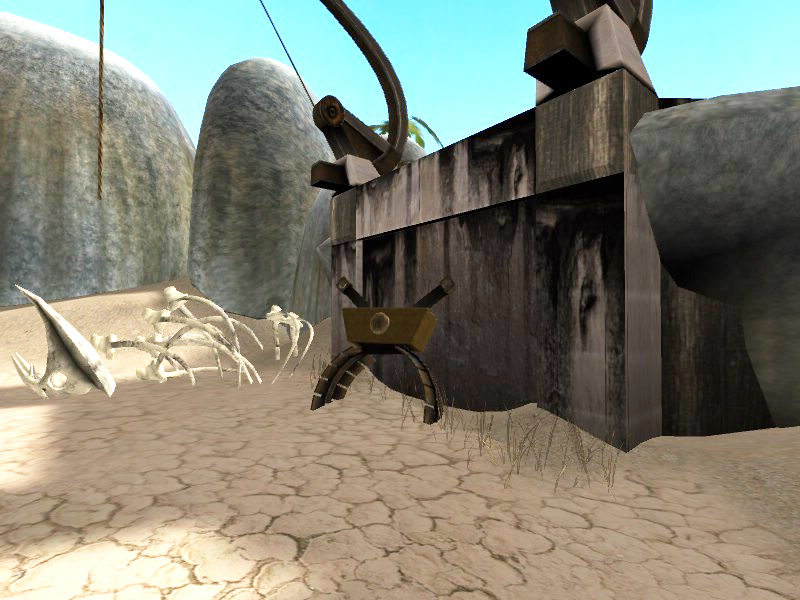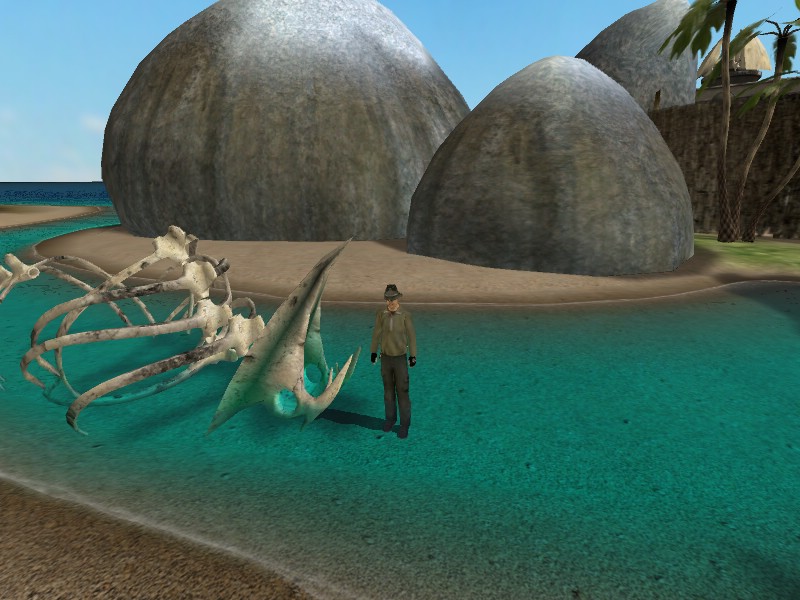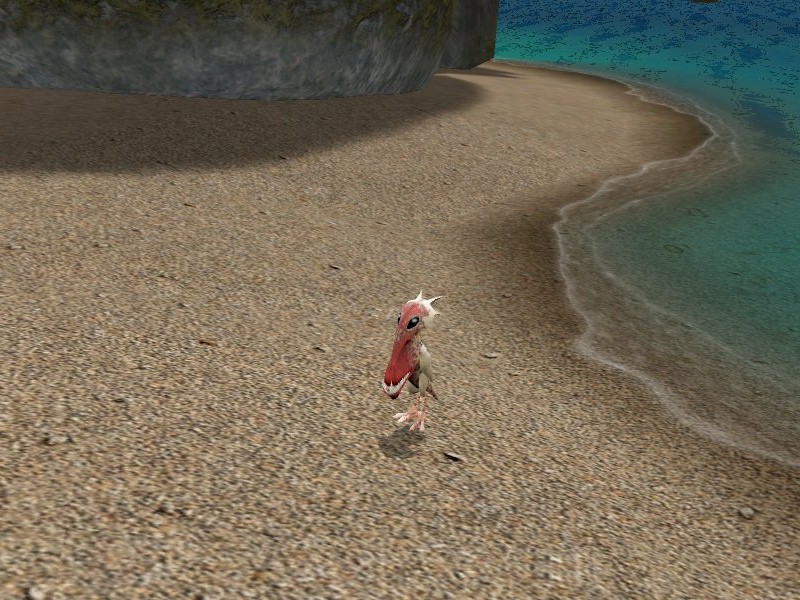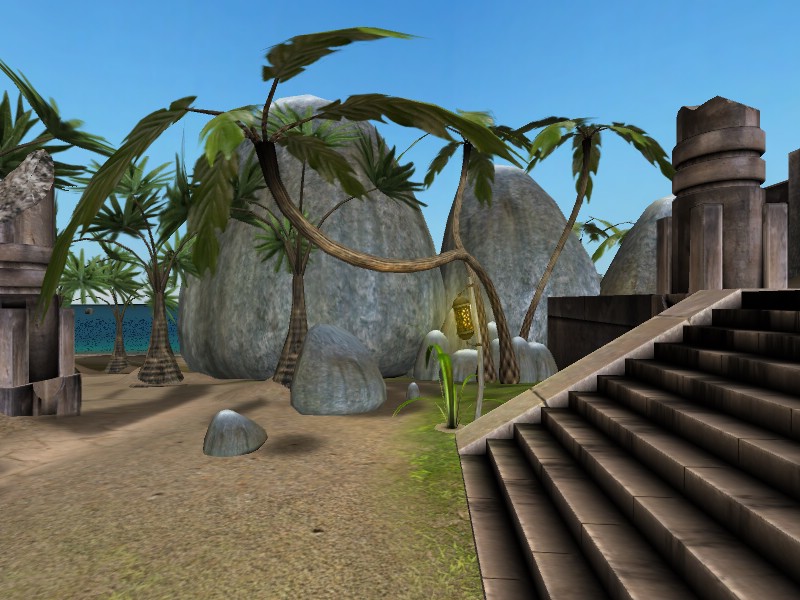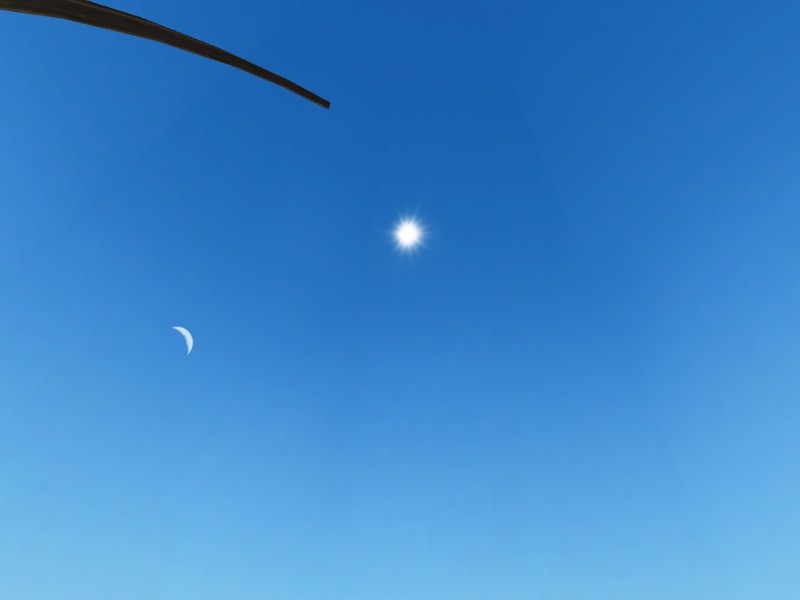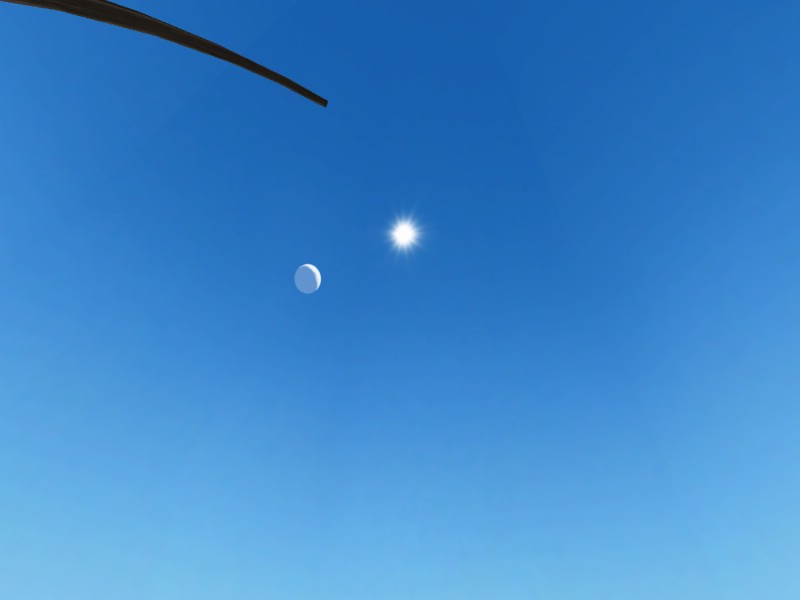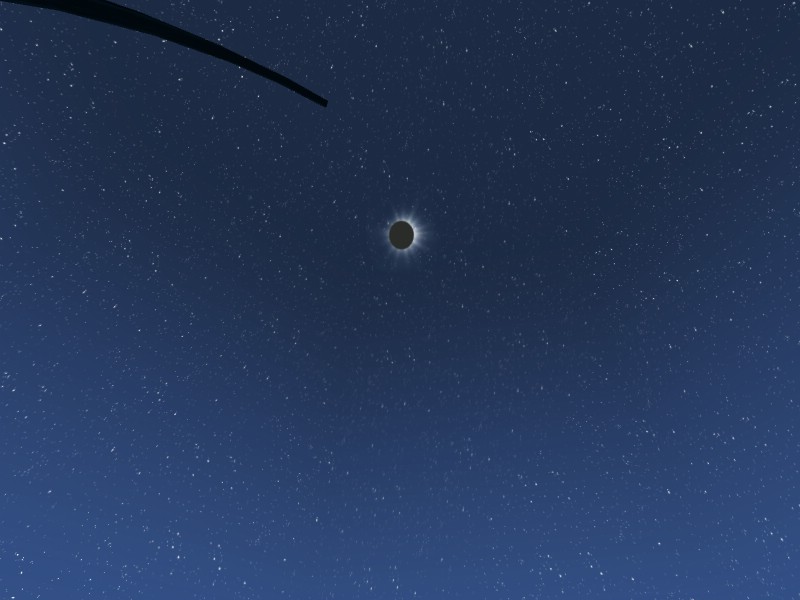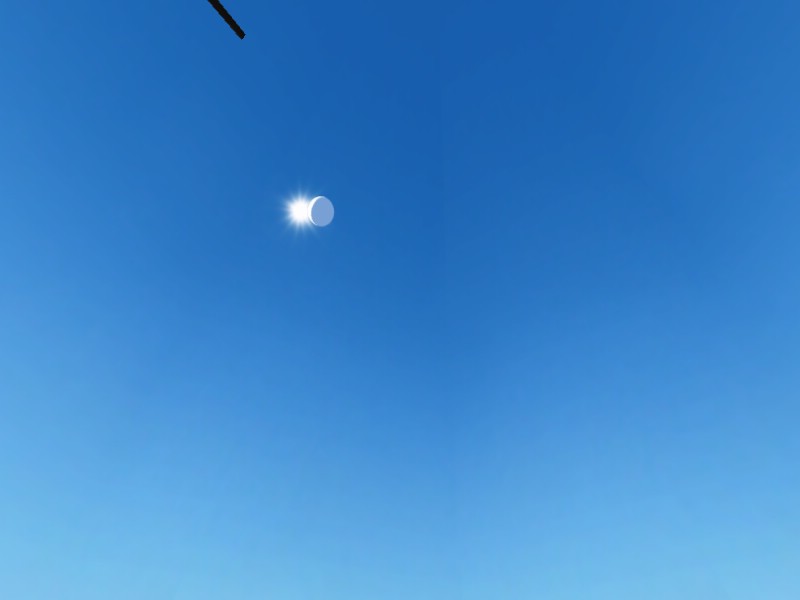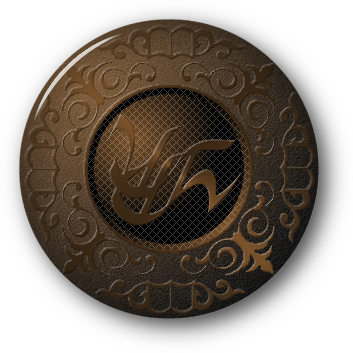

|
|
Laki'ahn was a sporting Age, in much the same manner as Kahlo and Rebek. Like Rebek, Laki'ahn was devoted to blood sport, but unlike Rebek, Laki'ahn's was legal. The Age consists of one main and several smaller islands. The main island has three large structures; a) a sports lodge connected to b) an arena, and c) a small underground maze. There are smaller wooden structures scattered around the island too. Laki'ahn had a native populace that were not as advanced as the D'ni, but for some reason the Age was approved anyway, and the natives were forcibly "civilized" by their D'ni masters. It is implied by Esher, a D'ni survivor that used to visit the arena when it was active, that after the Fall of D'ni the natives abandoned the islands that made up the Age and returned to their traditional ways of life, which he seems to view as a return to barbarism. The arena of Laki'ahn was a place were native warriors were pitted in single combat against a large sea animal called laki, and after which the Age is named. The laki formed a red gemstone in their bodies, perhaps in a process similar to how an oyster forms a pearl, and the D'ni prized the stones. Since laki were fierce animals when cornered, harvesting the stones was eventually turned into a spectator sport. The Lodge: The sportsmen's lodge is a stone structure with a three-room main floor and a cupola with tall windows piercing it for light. It has chairs and tables for visitors to rest in. A rear door provides access to a short corridor that opens on the arena seating area. Note the Crimson Kadish butterflies fluttering past in this photo; it's believed that they are native to this Age.
Here's the cupola on the roof of the lodge.
The interior of the lodge is paneled in native woods and tapestries, and may have been used for trading the laki stones as well as being a room for socializing and waiting.
Scattered around the lodge are three paintings of the natives in an abstract style. The first painting shows native sailboats approaching a dock to participate in the games. The tower in the foreground is a beacon that seems to have been lit on days when pit fights were scheduled. Of several artistic towers using laki skulls scattered around the island, only the one near the dock has a fire basin. It's also the only one on which the laki skulls face upward.
The second painting shows a native cutting a stone out of the body of a defeated laki.
The last painting shows a native holding up a stone in triumph.
The Arena: The arena is a small structure with two main seating areas. The fighting pit is also not very large, and is covered in water that is about knee deep.
There are four openings in the wall of the pit. Two small ones are the entrances to a curved corridor that leads to the underground maze. One large gate is the entrance through which the laki were herded, and the last opening is for a channel down which the bodies of dead laki were dragged for disposal.
At the end of the channel is a crane, used to swing the bodies over into the boneyard.
A second structure which is part of the arena complex is this holding pen. Laki were herded into this pen to await their fate in the fighting pit.
In this picture, you can see the bones of a laki in the pen on the left. The triangular arch is the entrance to the short channel leading to the pen from the sea.
The pen has sets of interior and exterior gates to make controlling the laki easier. They are controlled from a station off to one side of the pen.
The maze: The maze is a two-level corridor system that seems to have twists and turns that make no sense. Navigation is made possible by a series of colored lights set at the intersections. The maze was the means by which native fighters would enter the arena. At the far end of it is a semi-circular corridor that lets out into the fighting pit by gates at either end. This is the entrance into the maze from the beach near the dock.
This is the first branching of the corridor. It's typical of the rest of the complex. Note the navigation light in the lower left corner of the photograph, a green light in this case.
This shack outside the maze was probably a watchtower for natives to watch for approaching boats, but that's not a certainty.
This is the dock where the natives landed on days when they were to fight in the arena. The wreckage of a native sailboat is still there. The beacon shown in the painting of native boats found in the lodge is the structure on top of the rock here.
Laki: Laki appear to be mammalian, although I cannot be certain of that. They have fins and flukes similar to a whale, but have a distinct head and neck. Their backs and skulls have plates of toughened skin armoring them. The back fins and armor do not have any bony structure under them, but the head armor does. They have a wide mouth with tusks on either side, and eyes set on the sides of the head. Their bellies are pleated in a manner similar to a large whale. It's unknown what they eat, but given the size of their mouths, their diet is most likely made up of relatively small fish.
The next two pictures show a laki swimming past a rock. The sea floor around the islands is fairly shallow.
These two pictures show laki from under the water.
The boneyard: The area around the arena has a number of skeletons of dead laki. When one was killed in the arena, the body would be lifted outside and dumped on the grounds in a small depression surrounded by rocks to be stripped clean by small scavengers called piranha birds. Since the boneyard is relatively clean, the bones must have been removed later to another location, or dropped into the sea. This picture shows the boneyard from the crane ramp.
A closer look at a Laki skeleton with the crane in the background.
The device in this picture is a giant set of tongs used on the crane to pick up the bodies of dead laki and drop them into the boneyard. It's likely that native work gangs would then have dragged them away from the crane to make room for the next carcass.
To give you a better idea of the size of an adult laki, I'm standing next to one of the skeletons. The shallow canal I'm standing in leads from the sea to the laki pen, and a branch leads to a dead end. As you can see by the skeleton, the water is too shallow for the laki to swim. They were probably dragged along by ropes pulled by native work gangs. I don't know if this laki died while being pulled to the pen, or if it's a body from the nearby boneyard. There is another skeleton farther down the canal.
This is a piranha bird. Piranha birds are flightless scavengers. Several still survive on the island, although their major source of food is gone. Like a vulture, their heads are unfeathered to prevent blood and other substances from sticking to them. The elongated, narrow head would have permitted the bird to get between ribs and other narrow spaces. Despite their fearsome appearance, they are skittish little animals, and this is as close as I could get to one before it ran off.
Plant life: Laki'ahn has two main types of tree which share characteristics with Earthly palm trees, but have differences. One type has a trunk that has a wide base, but tapers sharply, then splits into multiple branches with leaves spreading out in a disc at the ends. The second somewhat resembles a palmetto, with a long trunk that often twists or runs parallel to the ground, although it too has only a few leaves at the end of the trunk.
Here is a picture of some of the taller trees, which share some of the characteristics of a Madagascar palm tree.
In this picture, you can see a type of mossy groundcover, and a plant that bears some resemblance to Phormium.
The moon: Laki'ahn has a single moon that is very much like that of Earth's satellite, Luna. And like Luna, its size and distance from the planet is just right to cover the sun completely and form a solar eclipse. Unlike Luna, the moon of Laki'ahn has a very fast orbital period of only eighteen to twenty minutes, which means it must be much smaller than Luna, and much closer to Laki'ahn than our moon is to Earth. If you are in Laki'ahn for very long, you'll experience a solar eclipse many times.
In this sequence of pictures, you can see the approach of the moon toward the sun, the eclipse, and the moon moving away.
|
Myst, the Myst logo, and all games and books in the Myst series are registered trademarks and copyrights of Cyan Worlds, Inc. Myst Online: Uru Live is the sole property of Cyan Worlds Inc. The concepts, settings, characters, art, and situations of the Myst series of games and books are copyright Cyan Worlds, Inc. with all rights reserved. I make no claims to any such rights or to the intellectual properties of Cyan Worlds; nor do I intend to profit financially from their work. This web site is a fan work, and is meant solely for the amusement of myself and other fans of the Myst series of games and books. |
